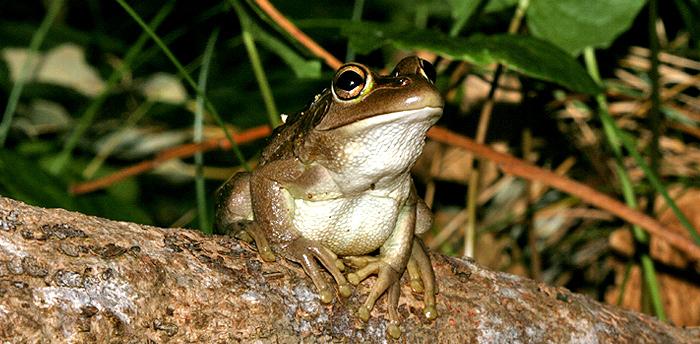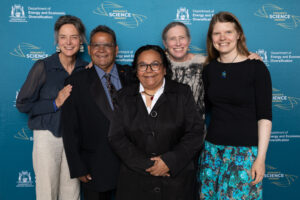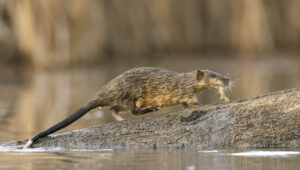Perth is full of friendly frogs. Some can be hard to find unless you know where and when to look – and, more importantly, listen!
The wetter months bring out some of our most interesting amphibians, so we’ve put together this frog-spotting guide on the best ones to find.
BANJO FROG
Banjo frogs are very active around July and August.
Most commonly, banjo frogs are found near swamps and wetlands, but they are great burrowers and often found some distance from water.
They are usually a grey-brown colour with splotches of darker skin and a distinctive pale stripe down the middle of their back.
Caption: A banjo frog
Credit: Stephen Mahony/WA Museum
This frog makes a loud ‘BONK’ noise, and when a big group of males (a chorus) are all calling, it sounds like a bunch of bad banjo players!
Try your luck at Bold Park or Herdsman Lake, but also keep your eye out at local wetlands or suburban gardens across Perth.
QUACKING FROG
The best time to find the quacking frog is during its breeding season from late June to August.
They are a mottled brown or tan colour and grow to about 4cm long. The males have an eye-catching red colour on their thighs – you can’t miss it!
Calling male quacking frogs sound – surprise, surprise – like a duck quacking.
The easiest way to find a quacking frog is to call to them. They are very territorial, so if called to, they will often call back.
Caption: Quacking frogs wrestling
Credit: Dr Bruno Buzatto (Image not for reproduction)
They often breed near granite outcrops such as in Lesmurdie Falls National Park or the Darling Ranges.
A little closer to home, they can be found at urban wetlands like Piney Lakes or in the Maylands area.
SQUELCHING FROGLET
The squelching froglet is most active during its breeding season from May to August.
Its splotchy dark grey and brown colour helps it blend in with mud and dense vegetation.
As the word ‘froglet’ would suggest, they’re small frogs, growing to about 2.5cm.
The squelching froglet is very easy to hear. They’re loud and form big choruses, so you can often hear them from quite a distance.
Caption: Squelching froglet
Credit: Stephen Mahony/FrogID
Unsurprisingly, they make a rubbery, squelching sound when they call.
This frog is common all over the Swan Coastal Plain and most of the big lakes in Perth, including Herdsman, Piney, Parry and Bibra Lakes.
Don’t limit your search there because any wetland is a good place to keep an eye (and ear) out.
MOANING FROG
Moaning frogs only call for a short period of time in late May and into June.
They are round, stocky and about 6cm long, with thick legs, big eyes and a mottled brown colour.
Caption: Moaning frog
Credit: Jodi Rowley/WA Museum
Like most of the other frogs in this list, they’re named for their call.
Listen out around urban wetlands for a creepy low moaning noise – it’s probably this frog.
They love burrowing and have a habit of rocking up unannounced in most suburban backyards.
Now you have your guide to frog calls – hop to it and see how many frogs you can find!









